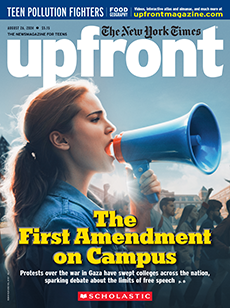1. Set Focus
Pose this essential question to guide discussion: What should society do to address homelessness?
2. List Vocabulary
Share with students some of the challenging vocabulary words in this article (see below). Encourage them to use context to infer meanings as they read.
- localities (p. 9)
- criminalize (p. 10)
- disingenuous (p. 11)
- prolong (p. 11)
- gentrification (p. 11)
- explicitly (p. 11)
3. Engage
Briefly review Grants Pass v. Johnson with students. Explain that the Supreme Court overturned a previous decision by the 9th Circuit Court of Appeals that ruled it cruel and unusual punishment to arrest homeless people for sleeping outside. The Supreme Court’s decision means that governments across the country can pass laws that make sleeping in public illegal, regardless of whether someone is homeless.
